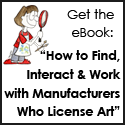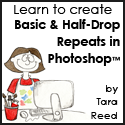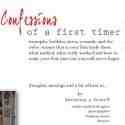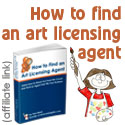If you’ve had success from short term, commission-based illustration, you may have realised that setting up some longer term streams of income from your illustration skills will help you create a sustainable, long term career without leading to burnout from having to do more and more commissions to increase your income.
Art licensing contracts are a great way to secure a long term income stream from your illustration work. While it can be a longer process to secure a contract, see your work actually in use on products and receive an income from it, it’s a great option to pursue if you’d like your illustrations to earn more than just a one-off “on commission” fee.
The following 201 guide lays out all the steps you need to take in order to get started in art licensing…
Research the Market
The first step you need to take before you get started in art licensing is to do your research. While the allure of securing more long term income from your illustration and creative work may be appealing, it can be a lengthy process to pursue before you even see any income. Here’s where you need to start researching exactly where your illustrations can be used…
A great way to do this is to head out to your nearest shopping centre/mall and start browsing around the stores…try and take note of:
- The manufacturers who produce items which use illustration styles similar to yours
- The current style, trends and colour schemes
- The many different types of products which would be suitable for your illustrations (some of which you probably would never have thought of!)
As you do this, it also makes sense to make a list of the manufacturers you feel would be suitable for your work and then start to identify their contact details for later on in the process.
Recommended Resources:
 “How to Find, Interact and Work with Manufacturers who License Art” by Tara Reed
“How to Find, Interact and Work with Manufacturers who License Art” by Tara Reed
If you’d prefer to cut out the middleman and work without an agent (who’ll take a cut of 40-60% of your royalites), this ebook is a great resource to help you find manufacturers to work with and to learn how to communicate and interact with them which results in art licensing contracts.
While it doesn’t cover negotiating contracts with manufacturers, it is a fantastic resource to help you get started in the art licensing world where, as always, it can be a case of who you know, not what work you do.
Build your Art Licensing Portfolio
In order to secure art licensing contracts, you’ll need to create a portfolio that’s specific to art licensing. These differ from illustration portfolios for typical commissions and you’ll need to consider the following:
- You need to create sets of 4 illustrations which include repeat patterns & borders
- Think about themes (Christmas, Valentine’s Day) for your sets and when/where they could be used
- Pay close attention to colour trends and style trends and ensure your portfolio is current and relevant
Recommended Resources:
 “Basic Repeat Borders and Patterns” by Tara Reed
“Basic Repeat Borders and Patterns” by Tara Reed
One of the requirements that many manufacturers have with illustrations used for art licensing is that they can be used as repeat patterns and borders (think of baby outfits as an example).
There are a few ways to achieve this in Photoshop but it’s not as easy as it seems - and especially not if you need to do it to a manufacturer’s specifications. This is a very practical and visual ebook which walks you through the Photoshop skills you need to know to create the patterns and and borders that manufacturers will want to see.
Set up your Art Licensing Portfolio Website
If you’re serious about securing art licensing contracts, you’ll need to set up an individual portfolio website for your art licensing work - separate from your standard illustration portfolio website. This is because the work you need to show for art licensing clients is typically quite different from the work you need to display for other illustration commissions. Ensure your art licensing portfolio website meets the following criteria:
- Make it easy for art licensing clients (manufacturers) to find samples of your work on the site.
- Don’t show everything you’ve got on your site - some manufacturers might not want images to be made public yet.
- Encourage potential clients to sign up to see your whole collections so you’ve got their details to follow up with and it also keeps your collections private.
- Show your designs mocked up on actual products (e.g. T-shirts, material etc.) - give manufacturers a visual example of how your work will look on one of their products.
Recommended Resources:
 “Product Mock-Up Magic” by Tara Reed
“Product Mock-Up Magic” by Tara Reed
As we’ve mentioned above, it’s definitely a good idea to show your art work and illustrations mocked up on actual products so that manufacturers get an idea of how they’d look if they use your work.
This obviously requires photoshop skills and blank images of a range of products to use for your mock-ups. That’s why this kit by Tara Reed is so useful - not only do you get tutorials which show you how to create mocked up images, you get the files of blank products to use too. You may already have the skills to create your own (as I do) but if you don’t or you’d like to save yourself some time, this is a great tool to use.
Get work & Secure Contracts
Once you’ve got a complete portfolio and a portfolio website set up, it’s time to start finding art licensing contracts and clients. The following are tried-and-tested strategies to help you find work:
Contact manufacturers: Remember the research you did in step 1? Here’s where you get to use the information to start contacting manufacturers directly to show them your work. This is much like contacting art directors for typical commissions, so make sure you follow the right process to make a connection.
Walk the trade shows: A common strategy to attract the attention of manufacturers (and agents) is to walk the trade shows with the aim of networking, researching and hopefully connecting with manufacturers and agents.
Exhibit at a trade show: Go one better than walking the trade show and exhibit your work so that manufacturers come to you. This is a more costly option than simply attending a trade show so it pays to have already attended the trade show as a visitor previously and made some contacts, if possible.
Consider getting an agent: There are numerous reasons why illustrators prefer to work with an agent - and art licensing is no exception. An agent can help you handle the art licensing contracts and help get you work but there’s obviously an art to securing a good agent too, so it’s not necessarily an easy way out nor a surefire guarantee of success even if you do land an agent.
Recommended Resources:
 “Confessions of a First Timer” by Khristian A. Howell
“Confessions of a First Timer” by Khristian A. Howell
An ebook by Khristian which shares her experience of attending and exhibiting at Surtex (the biggest and most prominent art licensing trade show in the world) for the very first time. Khristan shares her take on how to make the most out of exhibiting at an art licensing trade show for the first time.
The ebook covers the 10 major items that Khristian attributes as the keys to her success - and will help you make the most of a similar opportunity when you’re ready to make the leap and exhibit your work at a trade show.
 “How to Find An Art Licensing Agent” by Tara Reed
“How to Find An Art Licensing Agent” by Tara Reed
If you’ve decided that an art licensing agent is for you (or if you need help deciding whether you want one), then this is the ebook you need to read.
From Art Licensing queen, Tara Reed, the ebook covers everything you need to know about working with an agent (the good and the bad) and what you’ll need to do to secure one.
This is a comprehensive guide that covers everything you’ll need to know about art licensing with an agent so it’s a great place to start if you’re still undecided about which way to go.
Now you’ve read about art licensing, you might be interested in finding out more about other income streams for illustrators that you may not yet have pursued. The next 201 guide covers more in-depth information about children’s book illustration.
